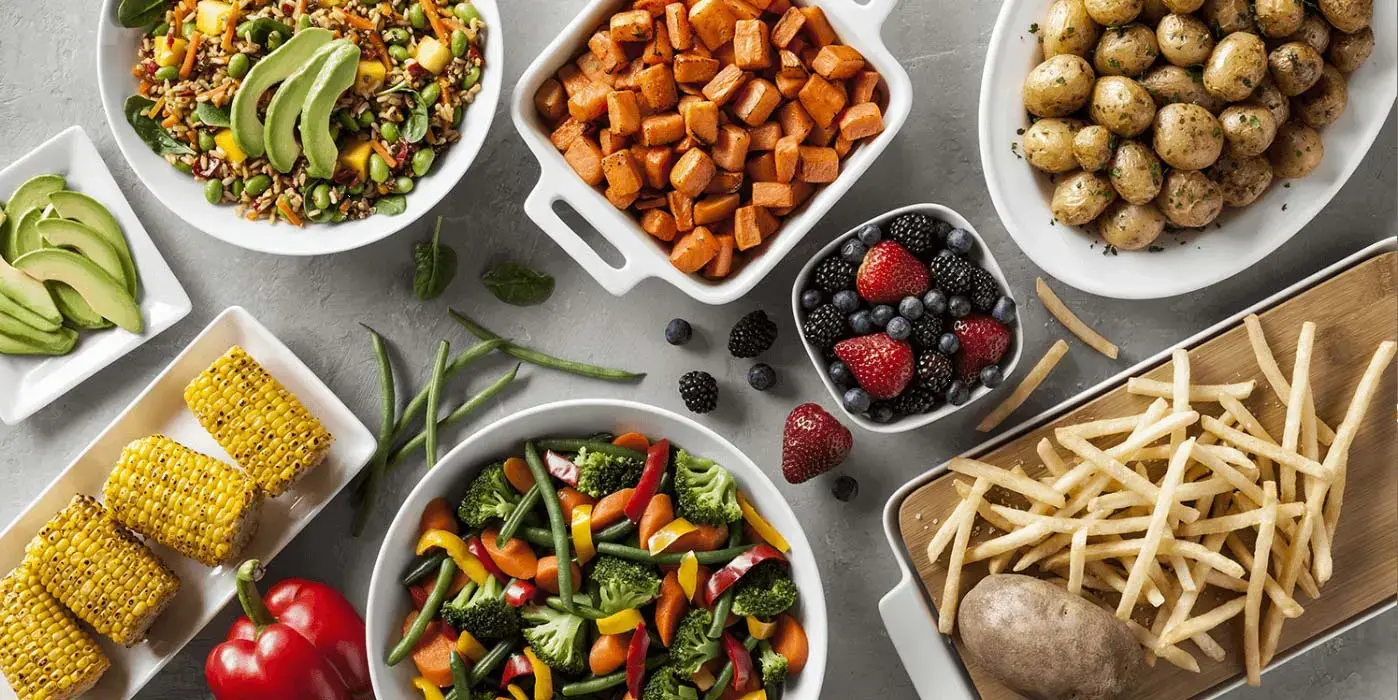K-12
Student-Centered Menu Design: Boosting Participation Through Choice, Culture, and Voice
8/12/2025

In K–12 foodservice, it’s easy to get caught up in the day-to-day demands—budgets, staffing, compliance, scheduling, procurement, nutrition, and more. But amid all that, it’s important to remember the vital role school meals play in supporting students’ health and well-being. These meals provide a consistent source of nourishment and help fuel learning, growth, and success in and out of the classroom.
Indeed, no matter what segment you are in, every food and dish tells a story—about a culture, a cuisine, an identity. And when students’ stories aren’t reflected in the food, they tune out and participation drops.
That’s where student-centered menu design comes in. The concept has been gaining attention across K-12 as a way to boost meal participation, build trust in students, and create a school meal program that reflects the diversity of today’s student population.
Student-centered menu design defined
So what is student-centered menu design? At its most basic, it’s an approach to school meal planning that puts student preferences, cultural backgrounds, and feedback at the center. In many ways it goes beyond simply designing menus for students and instead encourages designing the menu with them.
This approach aligns with the USDA’s push to ensure school meals reflect the voices and needs of all students, rooting K-12 dining programs in inclusivity and equity.
More importantly, it works. By involving students in the menu process, districts are seeing more engagement, higher participation rates, and even reduced food waste. When students feel seen and heard, they’re more likely to eat the meals offered to them. Foods that reflects their tastes, cultures, and ideas are simply more appealing.
Incorporating student voices
So how do you turn student eaters into co-creators? To center students in the menu design process, it’s essential to create direct pathways for communication. Many districts today conduct regular taste tests and surveys to gather input from students—what do they like, dislike, etc. These insights can then be used to help tailor menus to their actuals wants and needs instead of making assumptions.
Other school districts are creating student advisory groups or “menu councils” that meet regularly to provide input, review potential dishes, and vote on favorites. Again, it not only provides feedback, but increases that crucial buy-in—these students then advocate for the program among their peers.
Creating culturally relevant food
Food is deeply personal. Think about your favorite foods, the foods you grew up with, or the foods that are a central part of your heritage or culture and how personal and meaningful they are to you. But for too many students, meals served at school may not reflect what they enjoy, connect with, and eat at home. That disconnect again leads to lower participation, particularly among culturally diverse populations.
Student-centered menus consider the cultural makeup and backgrounds of the student body, ensuring authentic representation on the plate. Consider how you can incorporate dishes that reflect the cultural diversity of your student body—is it halal entrées, Latin American street foods, or Asian-inspired bowls? To drive home the authenticity messaging, you can even partner with local chefs who are a part of that community or ask for recipes from families.
In New York, city officials noted that roughly 430,000 students across the school system identified as Muslim or Jewish, yet halal and kosher options were not available, potentially limiting participation.1
After a pilot program was launched in 2018, today kosher school meals are now available upon request, while halal options are available at every school.2 For hundreds of thousands of students, school meals are not only more culturally relevant now, but it may even be the first time they can participate.
Heritage months and cultural holidays are particularly relevant when looking for ways to connect with students and help them feel proud of their culture. A Lunar New Year celebration or Latin Heritage Week can generate buzz among students and create a more diverse dining program overall.
Branding matters
Even the most delicious new menu item can go unnoticed if it doesn’t get students’ attention. Thinking through the language, visuals, and presentation of school meals also plays a central role in student engagement. Language matters—instead of a “Grain Bowl,” can you call it a “Power Bowl”? Simple name changes can transform perceptions.
Themed days and more interactive formats and activities can also build anticipation and break up the everyday routine. Build-your-own bars, global flavor rotations, and popular options like “Taco Tuesday” get students excited.
Cafeteria signage, digital screens, posters, etc. drives even more participation. Again, center the students—use their art, ask for feedback, and use imagery and messages that match their interests (think music, movies, sports, etc.).
Try it in your district
Student-centered menu design doesn’t require a complete overhaul of your entire program to be effective. Start small, make changes, and build momentum. Here are three easy ways to get started:
1. Launch a student survey
You can download a sample feedback form and distribute it during lunch, asking about favorite meals, least favorite meals, dream dishes, etc.
2. Pilot a cultural dish week
Choose one week to highlight new dishes inspired by the student population or that are sourced from their suggestions. Feature them on the menu, promote them, and encourage staff to learn about the culture behind the food.
3. Join a webinar
Learn how top-performing districts are already using student-centered menu design to drive participation through free videos and webinars on YouTube.
If you want to keep students engaged and increase participation, it’s time to change your mindset. Trust students to help shape the cafeteria experience. By including their voice, culture, and background in menu planning, you’ll do more than just reach them, you’ll help foster a school community.
1 Halal and Kosher School Lunch Pilot Proposal
2 Food Programs, NYC Public Schools



